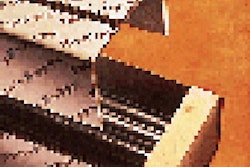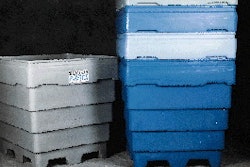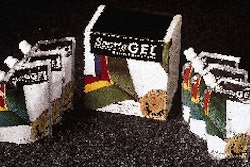34), Packaging World reports on how 3M Co. is developing its own glossary of pictograms on labels to help communicate the contents of its sealed shipping containers. In our Onstream section, we learn about new symbols from the Gravure Assn. and from the group that calls itself the "100% Recycled Paperboard Alliance." In industry forums, we regularly hear the urging of packagers that manufacturers of equipment and materials should use more pictorial representations in their documentation for machines or materials. Nearly five years ago, when PW was first designed, we began to use a variety of icons or pictographs to help readers more easily find certain types of editorial information. More recently, we've added icons that refer to machinery designed for "tool-less changeover," manual-type machinery for what we call "hands-on" operation, and even our special sections on controls. In fact, some machinery manufacturers have even asked us to use variations of the "tool-less changeover" pictogram for their own promotion. Why does this appear to be such a fast-growing trend? We need not look beyond one of the themes of this issue, global packaging. The fact is that pictorial representations can often communicate far faster than even the best selection of words-especially when a common language doesn't exist. That's a difficult admission for a journalist to make. But it's not absolute. Language allows us to communicate very specifically; in virtually every language, the proper combination of words can convey very exacting information. At best, pictorial representations can communicate only generally. But quickly and powerfully, if the pictogram is correctly understood. In fact, think about the last time you bought a product that required some assembly. My experience was with the instructions for the assembly and operation of a brush chipper/shredder. While the words may have been very carefully chosen, I know I referred to the drawings (Figure 1, etc.) more often than I reread the words. When done well, they can really simplify the procedure. While it's easy and trendy to cite instruction manuals for their communication failures, I have to credit Sears for the clarity and thoroughness of the instructions they provided. As our products more often move into global commerce, it becomes increasingly likely that, whether a shipping container or primary package, our packages will find their way into the hands of people who have little or no comprehension of our wonderfully diverse English language. When language is a barrier to communications, the pictogram can be a valuable resource. However, just as 3M asks for some international standardization of pictograms, we believe the time has come for some organization to assume responsibility over this pictorial version of Esperanza, a true international language. It took a long time to design the bar code and then gain general acceptance of the Universal Product Code in the U.S. and its cousin the Uniform Container Code. And these communicate only with the help of an electronic scanner as the "translator." And of course there are intra-industry codes and international ones as well. If we and others are to efficiently bring our products to the world marketplace, it seems absolutely essential that all the markings on the containers should be understood by as many people as possible. That will require international standards, and the sooner that work begins on them the faster we'll have an international packaging language.
Is a pictogram worth a thousand words?
Several stories and news pieces in this issue would seem to herald a movement away from words and towards "pictorial symbols used as a form of writing." In an article about packaging for global markets (p.
May 31, 1998
Machinery Basics
List: Digitalization Companies From PACK EXPO
Looking for CPG-focused digital transformation solutions? Download our editor-curated list from PACK EXPO featuring top companies offering warehouse management, ERP, digital twin, and MES software with supply chain visibility and analytics capabilities—all tailored specifically for CPG operations.
Download Now
Annual Outlook Report: Workforce
Hiring remains a major challenge in packaging, with 78% struggling to fill unskilled roles and 84% lacking experienced workers. As automation grows, companies must rethink hiring and training. Download the full report for key insights.
Download Now
Downloads























